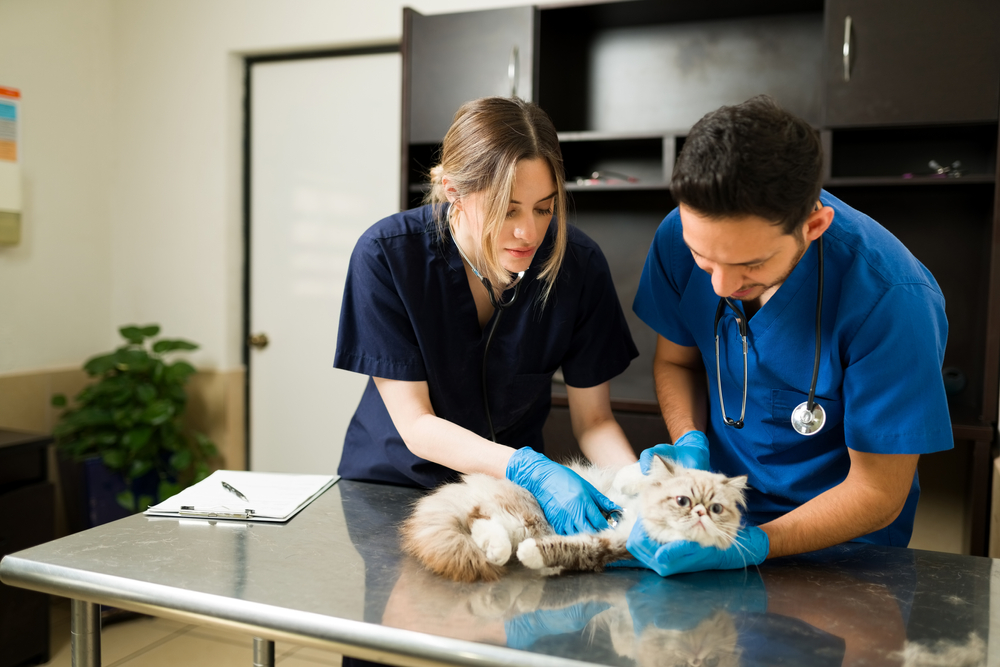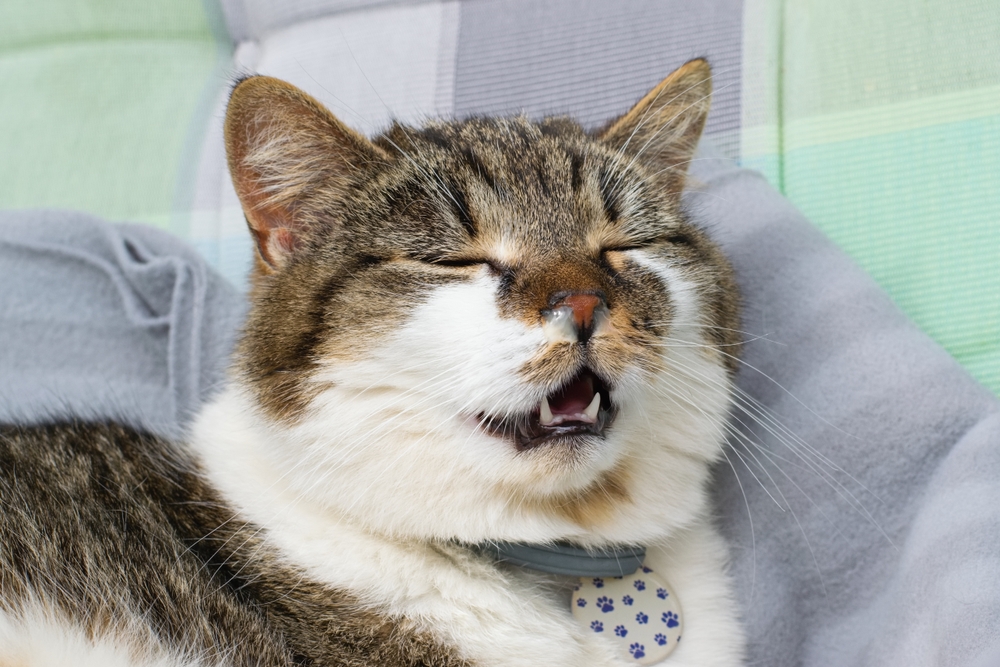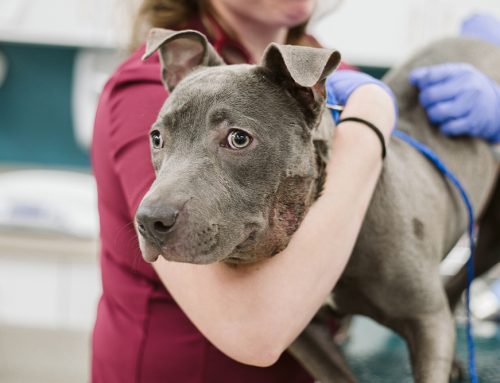Feline Heart Disease: Early Signs Every Cat Owner Should Know
A cat that tires quickly, hides more than usual, or breathes with effort may be showing signs of heart disease. Because cats mask illness so well, these symptoms are often missed until the condition becomes advanced. From murmurs to congestive heart failure, early detection and immediate intervention can make all the difference.
At VESCONA in Flagstaff, our 24/7 specialty and emergency hospital is equipped with advanced diagnostics and round-the-clock monitoring to uncover heart conditions early- and stabilize cats in critical need.
Understanding Feline Heart Disease
What Is Feline Heart Disease?
Feline heart disease refers to a range of conditions that affect how the heart pumps and circulates blood. While some cats are born with structural abnormalities, others develop heart problems later in life.
The most common form is hypertrophic cardiomyopathy (HCM), where the heart muscle thickens, reducing its ability to relax and fill properly. This causes blood flow to back up into the lungs, potentially leading to heart failure or dangerous blood clots.
Other major types include:
- Restrictive cardiomyopathy (RCM) – The heart muscle becomes stiff, limiting its ability to expand during filling.
- Dilated cardiomyopathy (DCM) – The heart walls thin and weaken, causing reduced contraction strength and low blood flow. Though now rare due to improved feline diets, taurine deficiency and some inflammatory diseases can cause it.
- Cardiac arrhythmias – Irregular heart rhythms may occur alongside any cardiomyopathy or secondary condition such as thyroid disease or electrolyte imbalance.
- Congenital heart disorders – Structural defects present at birth, including septal defects or malformed valves.
Each form impacts circulation differently, but all can progress silently for years before signs appear.
Why Heart Disease Matters
The heart’s decline doesn’t just affect circulation- it influences every organ system. As cardiac output decreases, cats may develop:
- Pulmonary edema – Fluid accumulation in the lungs causing labored breathing.
- Pleural effusion – Fluid around the lungs that compresses airways.
- Thromboembolism – Blood clots that travel to the limbs, often causing sudden paralysis or pain.
- Systemic hypertension – Elevated blood pressure that accelerates heart and kidney damage.
Without treatment, these complications can escalate quickly. Many cats first arrive at emergency hospitals like VESCONA during a respiratory or thromboembolic crisis– a reminder of how critical early detection and specialty-level care are.
Recognizing Signs of Heart Disease
Physical and Behavioral Symptoms to Watch For
The earliest clues are often subtle and easily mistaken for aging, arthritis, or anxiety. Watch for:
- Increased hiding or decreased activity – A cat that once played actively may now watch from afar.
- Breathing changes – Rapid or labored breathing at rest, or open-mouth breathing, are red flags. Respiratory distress in cats is always an emergency.
- Weakness or fainting episodes – May result from irregular heartbeats or poor circulation.
- Decreased appetite and weight loss – Often linked to nausea from poor oxygenation or fluid buildup.
- Cold paws or blue-tinged gums – Indicate poor blood flow and oxygen delivery.
If you notice any of these signs, seek immediate veterinary evaluation. Cats can deteriorate rapidly once the heart begins to fail.
Diagnostic Tools and Techniques
Diagnosing feline heart disease requires advanced technology and specialized interpretation.
At VESCONA, our cardiology and emergency teams use comprehensive diagnostic tools to evaluate cardiac structure and performance.
Typical diagnostics include:
- Physical exam and auscultation – Listening for murmurs, gallops, or arrhythmias.
- Chest radiographs (X-rays) – Assess heart size and lung fluid accumulation.
- Echocardiography – Real-time ultrasound imaging to measure wall thickness, valve function, and chamber size.
- Electrocardiogram (ECG) – Detects electrical rhythm disturbances such as arrhythmias.
- Bloodwork – Checks thyroid function, electrolytes, and cardiac biomarkers like NT-proBNP that signal heart muscle stress.
- Blood pressure measurement – Detects systemic hypertension, which often accompanies heart disease.
These tools allow rapid diagnosis in emergencies and detailed monitoring for long-term management.
Treatment Options for Feline Heart Disease
Medical Interventions
Treatment depends on the underlying cause and disease stage but may include:
- Diuretics to reduce fluid buildup in the lungs or abdomen.
- ACE inhibitors or beta-blockers to lower blood pressure and reduce the heart’s workload.
- Anticoagulants to prevent dangerous blood clots in cats with cardiomyopathy.
- Antiarrhythmic medications for rhythm control in cats with irregular heartbeats.
- Nutritional support for cats with dilated cardiomyopathy, including taurine supplementation when appropriate.
Cats with acute decompensation- fluid overload, collapse, or labored breathing- receive oxygen therapy, intravenous medications, and 24-hour monitoring in our intensive care unit.
Lifestyle Adjustments and Home Care
While heart disease can’t be cured, supportive care enhances longevity and comfort.
- Maintain a consistent medication schedule and monitor resting respiratory rate daily.
- Keep sodium intake low to prevent fluid retention.
- Limit stressful situations and intense exertion.
- Use elevated feeding stations and warm bedding to ease breathing and circulation.
Regular rechecks are vital to track progression and adjust therapy. For older cats, preventive testing for senior pets often catches cardiac changes before crisis develops.
Managing Heart Disease in Senior Cats
Unique Considerations for Older Cats
Heart disease in senior cats is rarely isolated. Conditions like hyperthyroidism or chronic kidney disease may coexist, complicating treatment decisions.
Because certain cardiac drugs affect kidney filtration, specialists carefully balance medication doses and hydration levels. Regular bloodwork and imaging allow safe, ongoing adjustment.
The Role of VESCONA in Heart Disease Management
Expert Care and Advanced Technology
VESCONA’s integrated specialty model bridges emergency, cardiology, and internal medicine under one roof. Cats benefit from hospital-grade technology, including echocardiography, digital radiography, CT scanning, and advanced oxygen therapy systems.
Our 24/7 emergency team responds immediately to cardiac crises- such as sudden respiratory distress, shock, or blood clot events- stabilizing patients for long-term management.
We also collaborate with referring veterinarians to ensure seamless continuity of care. Our team is always here to help guide you- day or night.

Your Cat’s Heart Health Starts with Recognition
Heart disease in cats may begin quietly but can escalate fast. Recognizing early changes and knowing when to seek emergency care can save your cat’s life.
If your cat is hiding more, breathing with effort, tiring easily, or collapsing, don’t wait. Call VESCONA at 928-779-5522 for immediate assistance.
VESCONA’s 24/7 emergency and specialty care ensures that your cat receives world-class cardiac support- from diagnosis to long-term management- with compassion, expertise, and the most advanced tools available. Visit our contact page to reach our team anytime.







Leave A Comment